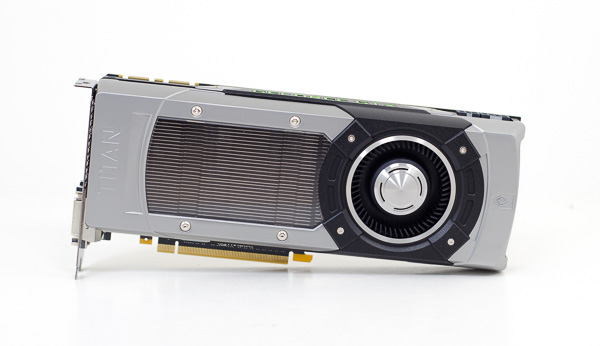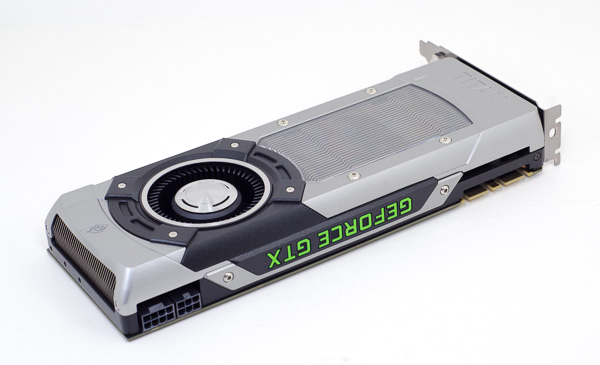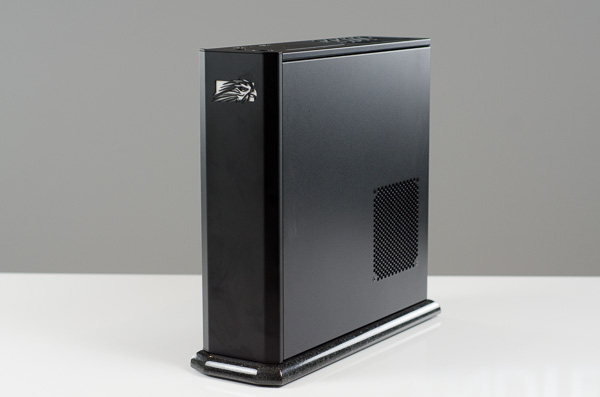High-End Meets Small Form Factor: GeForce Titan in Falcon Northwest's Tiki
by Anand Lal Shimpi on February 19, 2013 9:00 AM ESTToday NVIDIA officially unveiled its first consumer facing GK110 graphics card: the GeForce Titan. Although GK110 launched last year, gamers didn't have access to it as it launched exclusively as a Tesla part. No less than 18,688 GK110 based Tesla K20X GPUs were deployed in the Titan Supercomputer at the Oak Ridge National Laboratory, which did a good job of eating up almost all GK110 production. With the Titan Supercomputer launched and out of the way, GK110 could make its way into the consumer space. The development costs and effort to bring a 7.1 billion transistor chip to market are huge, so it makes sense to try and sell as many chips as possible, even if they're well above the sweet spot on the price/performance curve.
NVIDIA saw three target markets for GeForce Titan: 1) CUDA developers, 2) ultra high-end gamers looking for great 3-way SLI performance and 3) users looking to build a high-end small form factor gaming machine that only has room for a single, dual-slot graphics card at most. The first group is easy to address, and later this week we'll have compute benchmarks to begin to address that community (and perhaps even more over the coming months). It's the second and third groups that require a somewhat different approach.
To showcase what could be done with GeForce Titan, NVIDIA asked some of its closest system builder partners to build gaming systems around the new GPU. We had the choice of getting either a 3-way SLI system or a single card, small form factor machine. We were faced with a bit of a dilemma. A 3-way SLI system would mean we'd be able to share Titan SLI performance data, but the more exciting system would be the SFF machine. Ryan asked for both.
Given that Ryan is tasked with actually reviewing GeForce Titan, it made sense for him to get the beefy 3-way SLI system so he could get the review done. Seeing as how we only had a few days scheduled with Titan before the NDA would lift on performance data, Ryan didn't have the bandwidth to look at both systems and do the standalone GeForce Titan review. I had a bit of time before MWC, so I offered to help.
Although we're able to talk about experiences with Titan and the specs of the platform today, our full GPU review complete with performance won't hit until Thursday. This is just a chance to get an early look at the card and some of the types of systems that will use it. Ryan's piece will look at a 3-way SLI rig from Origin as well as the details of the GeForce Titan itself.
The Tiki
I've never technically purchased a pre-built desktop PC. My first build was an AMD 486 DX4-120, and before that I just used my dad's Packard Bell 386 SX-20. Excluding Macs and notebooks, I've always built my own PCs. When NVIDIA asked what vendor I'd like to have build me a GeForce Titan machine, I threw the ball back in their court: "whatever's best".
What showed up was this, the Tiki from Falcon Northwest.
I'd heard of the Tiki before, and I'd seen photos, but I had never encountered the system up close. The idea of building a small form factor, high performance gaming PC was always intriguing but I never got around to building one myself. By the time mini-ITX motherboards had matured enough, and high-end CPUs finally dropped below 100W, I stopped having time to play PC games regularly. Whenever I had the time to game, I'd just toss a bunch of components on the test bench and use that. A friend dropped by with a BitFenix Prodigy build last year and I was very impressed, tempted to go off and build one myself even. I never did, that pesky lack of time reared its ugly head once more.
I shared this backstory with Kelt Reeves, Falcon NW's President. To my surprise he told me that many of his customers were in a similar situation: very time constrained. That's why they turned to him to build them systems.













33 Comments
View All Comments
C.C. - Friday, March 8, 2013 - link
Since both fans (as you pointed out) are intakes, then the system has a positive pressure setup, which will keep nearly every dust particle out..FlixZilla - Thursday, March 14, 2013 - link
System looks great.. I'm considering going with this one myself as I need a sleek PC-Gaming solution for my hometheater. It's between between this Titan outfitted unit from Falcon and the iBuyPower Revolt and of course the Digital Storm Bolt. The Falcon is most expensive of the three but it has the most visually attractive case design. Downside to the Falcon is that the built-in audio seems poor.. just one line-out! I'm looking to go 5.1 or 7.1 in my theater so that's a disappointment unless I upgrade to an external SoundBlaster or something. The Revolt is most console-like, laying on it's side in traditional console form, but the case is definitely not designed with an upgrading user in mind. Getting into the Revolt to perform an upgrade would be a major pain, not that the system would need any for a good long time. Finally, the CyberStorm Bolt is a real killer with it's Falcon-like size, Revolt like prices, and easily upgradable case design. Then again, you can also throw the AVA Custom Direct into the mix with it's cube-sized mini gaming PCs (also outfitted by Titan)... they're more upgradeable and tweakable, plus due to the shape of the case, you could go Dual 680 or with a 690 if you want to best Titan's performance. I'm still deliberating but each option kicks major ass.Gastec - Sunday, October 27, 2013 - link
I just calculated the cost of the components of my PC (which started it's life in 2010 ) including the latest upgrades - a SSD and a new graphical card - and I ended up with around $2600 (€1900), without adding the monitor, keyboard, mouse and headset or speakers. So this system with any other card but the GTX Titan would cost less than mine and be faster. The Asus GTX 670 upgrade cost me €380 on Amazon in March 2013 and that was the lowest price I could find. Tell me how that fits in the "How to build a great gaming rig with just a few hundred dollars" myth?